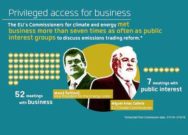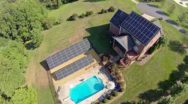The European Union (EU) devotes huge resources to delivering the power grid to every nook and cranny of Europe. Brussels is on a mission to stamp out off-grid living which it wrongly equates with poverty and deprivation.
Despite the promise of off-grid solar, 99 percent of EU energy funding still goes to grid projects. The EU has always served the interests of the big energy producers, including state-owned Nuclear power companies and the global oil giants.
The same is true in EU foreign policy towards the world’s most underdeveloped countries, where EU and other central government aid is focused on huge infrastructure projects rather than simple practical steps towards providing off-grid energy.
Despite innovative off-grid technology and high-profile initiatives, electrification in sub-Saharan Africa still trails population growth. In 2009 there were 585 million people in the region without power. Five years later, that figure had risen to 632 million, according to the latest International Energy Agency statistics.
A United Nations analysis of the flow of capital, released in September by the United Nations’ Sustainable Energy for All program, shows that off-grid systems simply are not getting the support they deserve.
“This research shows that only 1 percent of financing for electrification is going into this very promising and dynamic energy solution,” says program CEO Rachel Kyte, who calls the findings “a wake-up call” to the international community.
The 20 countries targeted in the U.N. report account for 80 percent of the estimated 1.06 billion people around the globe living without electricity. The report found that total investment in electricity infrastructure averaged US $19.4 billion a year in 2013 and 2014 (the latest year with full statistics). Of that, only $200 million per year was dedicated to off-grid systems.
This is “alarming,” the authors write, considering off-grid solar’s “enormous promise” to rapidly and cheaply deliver basic electrical services compared with the ability of traditional grids. The International Energy Agency estimates that 70 percent of rural electrification is best achieved by off-grid systems, including solar.
The report does note a few hopeful developments: The World Bank this year committed $150 million to rural off-grid renewable projects in Kenya, and companies installing pay-as-you-go off-grid solar systems raised $223 million last year.
Even those solar enterprises, however, face an enduring “grid is best” mentality. “Most of the political actors in this sphere still believe that the ‘real’ power is the national grid,” says Daniel Becker, founder of Rafiki Power, a company that has built minigrids in Tanzania and wants to invest throughout East Africa.
Becker says vague plans for extending national power grids also create a barrier to off-grid developers. “No one wants to give you money to build a minigrid where the government says the grid will be there in five years,” he says.
Other financing hang-ups relate to project scale and revenue expectations. Lenders and governments are only willing to …













